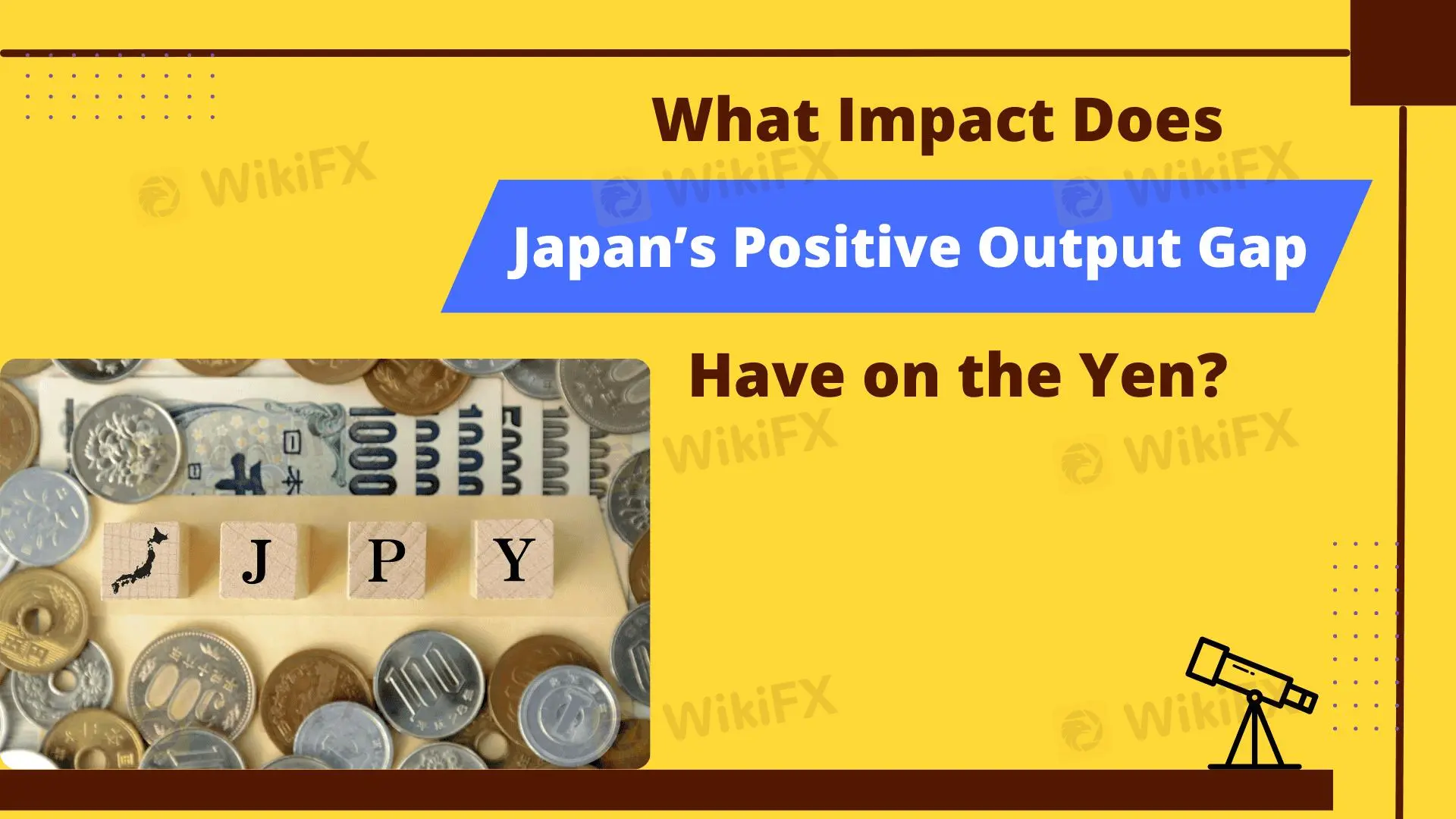简体中文
繁體中文
English
Pусский
日本語
ภาษาไทย
Tiếng Việt
Bahasa Indonesia
Español
हिन्दी
Filippiiniläinen
Français
Deutsch
Português
Türkçe
한국어
العربية
What Impact Does Japan’s Positive Output Gap Have on the Yen?
Abstract:The Japanese government has announced that, due to a tight labor market, the country’s economic output is expected to return to full capacity in the next fiscal year for the first time in seven years.

Recently, the Japanese government stated that, driven by a tight labor market, Japans economic output is projected to recover to full capacity in the next fiscal year. This marks the first positive output gap in seven years, suggesting that the Japanese economy may be gradually recovering from the impacts of the pandemic.
According to estimates from the Cabinet Office, Japan‘s output gap—the difference between actual output and potential output—could reach +0.4% in the fiscal year starting in April 2024. A positive output gap indicates that actual output has surpassed the economy’s full potential capacity, typically signaling strong demand. However, the Cabinet Office also highlighted that labor shortages could pose a significant constraint on economic supply. Japan‘s labor force currently stands at around 69 million, and insufficient labor supply could pressure sustained economic expansion. Additionally, Japan’s overall Consumer Price Index (CPI) is expected to slow from 2.5% this year to 2% in the next fiscal year, indicating that inflationary pressures may stabilize.
Future Trends and the Impact on the Yen
The positive output gap reflects a revival in Japan‘s economic demand, but labor shortages could create supply-side bottlenecks. The return to a positive output gap, associated with economic recovery, may boost market confidence in Japan’s economy. This metric is also a key indicator for the Bank of Japan (BOJ) in assessing whether the economy has sufficient momentum to sustain inflation. As a result, if the Japanese economy continues to improve, markets may anticipate the BOJ gradually scaling back its monetary easing policy or even entering a rate hike cycle.
In terms of the yen‘s trajectory, this news could provide short-term support. A positive output gap and a tight labor market might drive increased demand for the yen, particularly in the USD/JPY currency pair, potentially leading to yen appreciation. However, over the long term, the yen’s movement will depend on the BOJs specific policy actions. If the central bank maintains its accommodative stance to support economic recovery, the scope for yen appreciation could be limited.
Disclaimer:
The views in this article only represent the author's personal views, and do not constitute investment advice on this platform. This platform does not guarantee the accuracy, completeness and timeliness of the information in the article, and will not be liable for any loss caused by the use of or reliance on the information in the article.
Read more

OctaFX Flagged by Malaysian Authorities
OctaFX has been officially listed on warning lists by both Bank Negara Malaysia (BNM) and the Securities Commission Malaysia (SC). These alerts raise serious concerns about the broker’s status and whether it is legally allowed to operate in Malaysia.

Why Your Worst Enemy in Trading Might Be You
Be Honest With Yourself: Are You Slowly Destroying Your Trading Account?

TradingPRO: A Closer Look at Its Licences
In an industry where safety and transparency are essential, the regulatory status of online brokers has never been more important. For traders seeking to protect their capital, ensuring that a platform operates under recognised and stringent oversight can make all the difference. Keep reading to learn more about TradingPRO and its licenses.

A Guide to Intraday Forex Trading You Can't Miss Out
Intraday trading where everything happens in a day fascinates millions around India and worldwide. The drama, the hype, and the ups and downs resulting from those are nothing short of an adventure. Read this guide to ace the forex intraday trading game.
WikiFX Broker
Latest News
SkyLine Guide 2025 Malaysia: 100 Esteemed Judges Successfully Assembled
Vantage Markets Review 2025: Trusted Forex and CFD Trading Since 2009
Why STARTRADER Is Popular Among Traders?
A Guide to Intraday Forex Trading You Can't Miss Out
CONSOB Blocks Access to 13 Unauthorized Investment Websites
TradingPRO: A Closer Look at Its Licences
The world could be facing another ‘China shock,’ but it comes with a silver-lining
New SEBI Regulations on Intraday Trading
Everything You need to know about Barath Trade
IronFX Broker Review 2025: A Comprehensive Analysis of Trustworthiness and Performance
Currency Calculator


